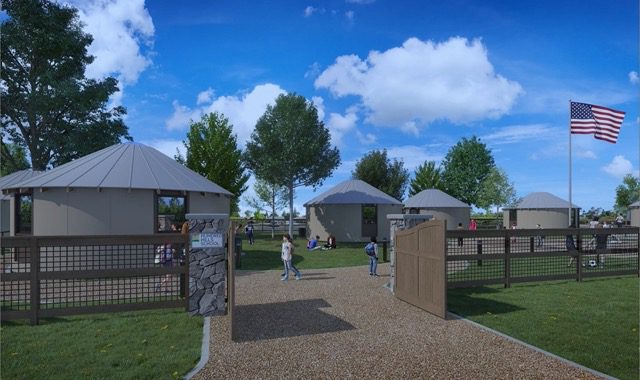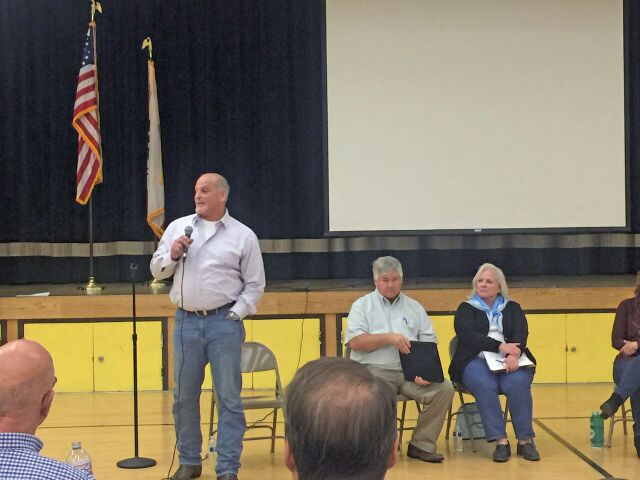Debate over location of Hundred Hills School on Willemsen property comes to a head at meeting
A Buellton Planning Commission item on the building of a proposed private elementary school consisting of “yurts,” or California Roundhouse buildings, on Dairyland Road, in the same area as the Buellton Library, ultimately led to a 2-2 vote from the commissioners, technically denying the project, during the Thursday, July 3, meeting.
However, Commission Chair Shannon Reese said near the end of the three-hour meeting that the proposal will end up going before the City Council at some point.
The item was put on the Planning Commission after members of the public voiced their concerns about the school during a town-hall meeting in June.
After City Manager Scott Wolfe introduced the item requested a Conditional Use Permit (CUP) for the project, Contract Planner Irma Tucker made a presentation for the proposal, called the Hundred Hills School Project.
Speaking by remote, Tucker explained the Hundred Hills School would be a Waldorf-inspired school serving preschool through the fourth grade. The campus, on the topmost portion of the Willemsen Property at 202, 208, 212, and 218 Dairyland Road, would consist of four classrooms, one administration building, and one restroom, all of the California Roundhouse building style, more commonly know as “yurts.”
Tucker said the school would originally serve a maximum of 50 students, and the length of approved for the CUP would not exceed five years.
“Mainly, this would be an incubator site,” she said. “They want to establish their school on this site while searching for a more permanent location. The temporary use would allow the site to return to original use.”
Applicant Sundeep Chanana thanked the supporters of the project and also the detractors, noting the “subset who go out of their way to disrupt our Saturday get-togethers, post anti-school flyers, and spread misinformation,” and requested they take him up on his offer to meet.
Chanana lauded the benefits of the school, calling it “an unparalled educational opportunity for Buellton and mentioned he and his wife had offered to pay the city the full cost of the five-year lease upfront but that the offer was refused.
He also addressed concerns stated by residents, saying that the topography of the site would be unchanged with only minimal grading; the structures to be built would have the longevity of stick-built homes; and there would be only one pickup and dropoff zone and that pickups and dropoffs would be staggered to mitigate traffic. He stated 40% of the schools applicants were from Buellton, with scholarships being offered to Buellton residents.
Fellow applicant Whitney Chanana, thanked their supporters for being there. She told the commission addressed the neighbors to the project and stated they had listened to their concerns about parking, traffic, and architectural compatibility during the earlier town hall meeting. She asked the Planning Commission to consider the project on its merits, and give students and parents in a city with one elementary another option.
After the applicants’ presentations and a short recess, the meeting reached public comment, which elicits contributions from 32 people on the record, 18 of them stating opposition.
Most of the objections came from residents of the surrounding neighborhood who believed there would be a negative impact with traffic and noise because of the school. Others did not like the idea of city-owned land being used for a private school. Former Buellton Mayor Holly Sierra, speaking strictly as a city residents, “The property was supposed to be for the people of Buellton. While I’m not against the school, it shouldn’t be on this property. It should be for the people of Buellton, not a private school.”
However, the project did also have supporters that spoke out at the meeting. Some of those who spoke in favor of Hundred Hills School noted the lack of options for students in early education, most notably preschool, while others praised other Waldorf schools and said it would be a great experience for Buellton children.
“It is good for Buellton to have another option,” Ralph Kunz said. “My kids went to a Waldorf school, and when they were in college, professors said what great kids we have and how they have a different way of thinking. It’s important to consider it’s not for everybody, but it’s an opportunity for people if they want it.”
After public comment, commissioners expressed their final thoughts on the item. Commissioner Kasey Kump said that listening to all the input, he felt the project just didn’t fit in with the neighborhood, emphasizing that the decision was not a judgement on alternative education or private schools in general. Meanwhile, Vice Chair Marcillo Sarquilla saidthat while traffic concerns could be mitigated by shuttling students to and from the school, he felt that Oak Valley Elementary School in Buellton was adequately providing the needed services for preschool and kindergarten students.
Commissioner Brian Campbell was concerned that the project came as a surprise to many residents, but felt there were merits to both sides of the issue, while Chair Shannon Reese said that while she liked the idea of a small town like Buellton having just one school that everyone went to, she felt the project was appropriate for the zone, noting that uses such as schools and churches are routinely places in residential infill zones. She states she lives next to Jonata School, which is much larger and also uses collector streets, and she doesn’t find it has an adverse impact.
Ultimately the commission voted twice, both times Sarquilla moving for disapproval, and both times resulting in a 2-2 deadlock with Sarquilla and Kump voted to disapprove, and Campbell and Reese voting not to disapprove. Wolfe announced that the vote actually meant the CUP was denied and the matter would go next to the City Council.






